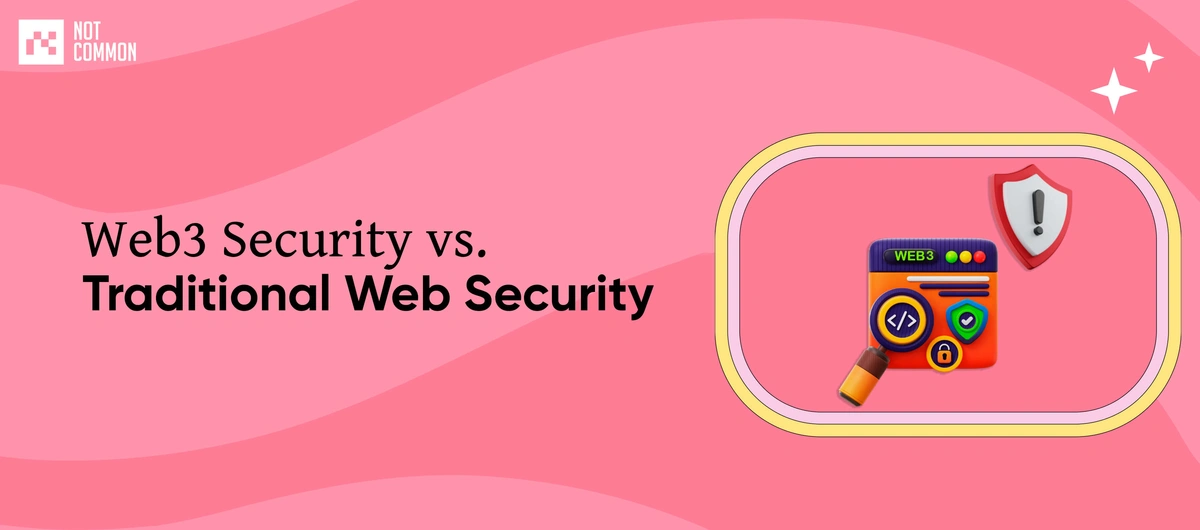Web3, also known as the decentralized web, refers to the use of blockchain technology to enable decentralized and secure communication and transactions on the internet. As the adoption of Web3 technologies grows, it is important to understand the state of Web3 security and how it compares to traditional web security.
Web3 Security vs. Traditional Web Security:
One key difference between Web3 and traditional web security is the use of decentralized networks and blockchain technology. In traditional web security, a central authority is responsible for verifying and authenticating transactions and communication. This central authority can be a single entity, such as a bank or government, or a group of entities, such as a consortium of banks. In contrast, Web3 technologies use decentralized networks, such as blockchain, to enable peer-to-peer transactions and communication without the need for a central authority.
The use of decentralized networks and blockchain technology can provide several benefits for Web3 security. For example, decentralized networks are resistant to single points of failure, making them more resilient to attacks. Additionally, the use of cryptography in blockchain technology can provide additional security by ensuring the integrity and confidentiality of transactions and communication.
However, Web3 security is not without its challenges. One major challenge is the risk of smart contract vulnerabilities. Smart contracts are self-executing contracts with the terms of the agreement between buyer and seller being directly written into lines of code. While they can provide benefits such as automation and increased efficiency, they can also be vulnerable to attacks if not properly designed and implemented. For example, the infamous Ethereum DAO hack in 2016 resulted in the loss of millions of dollars due to a vulnerability in the smart contract code.
Another challenge for Web3 security is the risk of 51% attacks on proof-of-work (PoW) blockchain networks. In a PoW blockchain, miners compete to solve complex mathematical problems in order to validate and add transactions to the blockchain. If a single entity or group of entities controls more than 50% of the mining power on a PoW blockchain, they could potentially manipulate the blockchain by reversing or censoring transactions. This is known as a 51% attack. While such attacks are rare, they have occurred on smaller PoW blockchains.
One potential solution to these challenges is the use of proof-of-stake (PoS) blockchain networks. In a PoS blockchain, the validation and addition of transactions is determined by the stake, or the amount of cryptocurrency that a user holds, rather than mining power. This can reduce the risk of 51% attacks and make the network more decentralized.
Another solution is the use of formal verification methods to ensure the security of smart contracts. Formal verification involves using mathematical proof to verify the correctness of a system or program. This can help to identify and fix vulnerabilities in smart contract code before they are deployed.
In addition, Web3 security can be enhanced through the use of secure hardware, such as hardware wallets and secure enclaves, to store and protect cryptocurrencies and other sensitive information.
There is a strong need for Web3 security education and awareness. As the adoption of Web3 technologies grows, it is important for users to understand how to secure their accounts and protect their assets. This includes using strong passwords, enabling two-factor authentication, and being cautious of phishing attacks and other scams.
In addition to individual user education, there is a need for greater education and awareness within the Web3 ecosystem as a whole. This includes the development of industry standards and best practices for Web3 security, as well as the establishment of security committees and working groups to address emerging threats and vulnerabilities.
Finally, Web3 security can also be enhanced through the use of insurance and other risk management strategies. For example, some Web3 platforms offer insurance for smart contract failures or losses due to hacking or other malicious activity. These strategies can help to mitigate the risks and impact of security breaches and ensure that users are protected in the event of an attack.
The Takeaway – Web3 Security
Overall, the state of Web3 security is an important and rapidly evolving area. Addressing the challenges and risks involved, and through the use of innovative solutions and best practices, we can work towards building a more secure and decentralized web for all. This requires ongoing attention and collaboration from all stakeholders within the Web3 ecosystem, including developers, users, and industry experts.
To learn more about Web3, NFTs, and Web3 security, please visit our latest articles.

